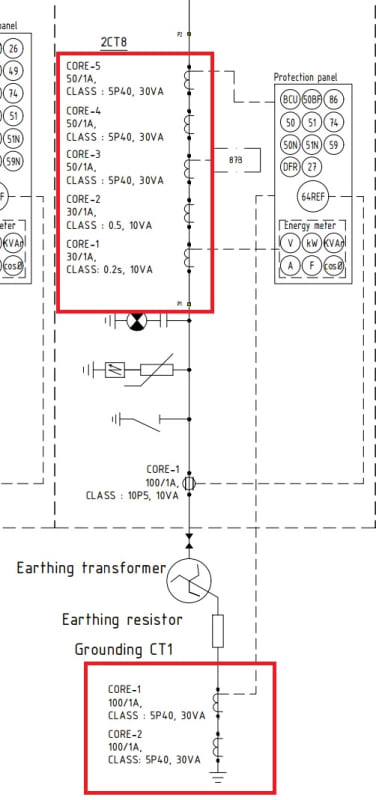Hello fellow engineers,
I'm currently working on a wind farm generator setup where we have an earthing transformer with a capacity of 1000kVA connected to a busbar operating at a voltage level of 35kV. The Neutral Earthing Resistor (NER) has a resistance of 50.5 ohms. My objective is to determine the appropriate CT (current transformer) ratio for accurate and safe measurement and protect the bay of earthing transformer of short circuit currents in this system.

I'm currently working on a wind farm generator setup where we have an earthing transformer with a capacity of 1000kVA connected to a busbar operating at a voltage level of 35kV. The Neutral Earthing Resistor (NER) has a resistance of 50.5 ohms. My objective is to determine the appropriate CT (current transformer) ratio for accurate and safe measurement and protect the bay of earthing transformer of short circuit currents in this system.


